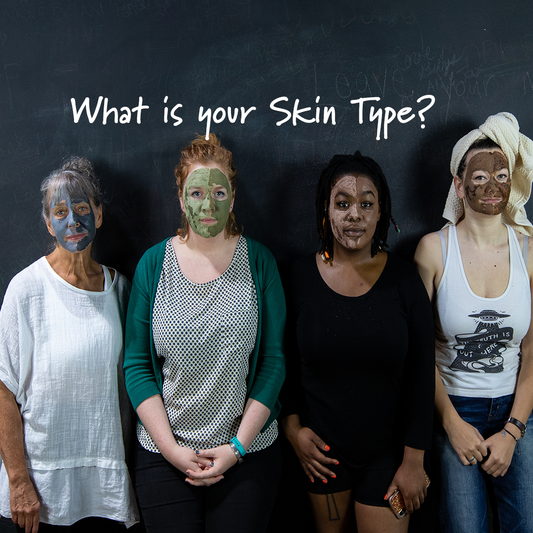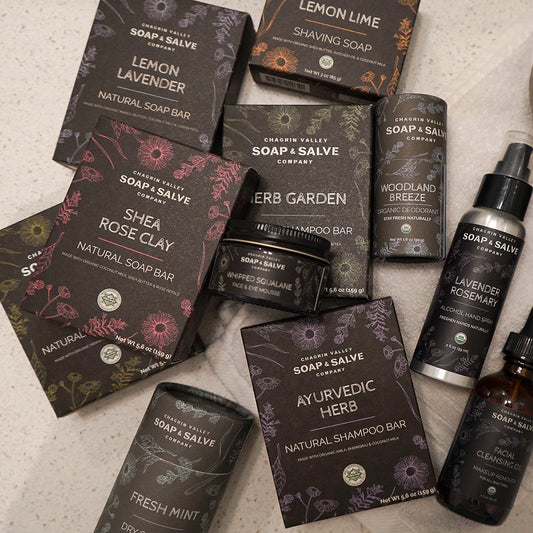How To Do A Simple Allergy Patch Test
What is Skin Patch Testing?
 Patch testing is a method of testing a new skincare product or ingredient to see if it will work for your unique skin.
Patch testing is a method of testing a new skincare product or ingredient to see if it will work for your unique skin.
It is a simple procedure done at home on a small patch of skin.
Performing a patch test can help people identify skincare products or ingredients that may cause a sensitivity reaction or an allergic skin reaction.
By performing a patch test you can see how your skin tolerates a product before using it over a larger area of the body.
Many skin problems are caused by using ingredients that cause sensitivities for your skin.
It is always recommended to do a patch test before using any new skin care product, especially for young children or if you have sensitive or easily irritated skin. Even natural ingredients, like herbs, oils, or essential oils can cause sensitivity reactions.
Please note that although patch testing may help to identify a problem ingredient, it is not always a foolproof test. A patch test is not a guarantee against skin sensitization in the future.
Why Are Patch Tests Needed?
Patch tests are very important because they help you avoid possible adverse reactions to new ingredients or products. They are especially helpful for people who have allergies, sensitive skin or easily irritated skin. However, even if your skin is not sensitive it is important to patch test any new skincare product first.
Allergy Patch Test
A patch test should be done on a discreet but sensitive area of clean, clear, dry skin, that will not be seen if there is a reaction but is also sensitive enough area that it will react if the product is at all an irritant for you. Behind the ear or in the crook of your elbow is ideal. We usually like the elbow crook since it is easy to cover with a bandage.
Procedure:
- Be sure the area of skin on which you will be performing the test is washed, dry and clean.
- Apply a small amount (about the size of a dime) of the item you are testing* on the upper part of your inner arm (at the crook of the elbow).
- Cover it with a bandage.
- Choose a time of day when you can leave the patch test in place for at least 24 hours without getting it wet.
- If you are sensitive to any of the ingredients, a reaction such as reddening, burning, itching, soreness, or other irritation, should occur within twenty-four hours of application.
- If you feel any irritation or reaction, remove the bandage immediately and wash the area with soap and water.
- If you don't see or feel any reaction, the preparation is probably safe to use. (See note below under Allergic contact dermatitis.)
*If you are testing herbs, mix a small amount of herbs with water to make a paste. Apply the herbal paste for the patch test.
*If you are testing a pure essential oil, dilute the essential oil in a carrier oil at twice the concentration you plan to use and apply as described above.

What If You Are Testing for Facial Breakouts?
If you have very sensitive, easily irritated or acne-prone facial skin, it is advisable to do a second patch test a couple of days after a clear test behind the ear. The skin on your face can react differently to product ingredients.
This second patch test involves a few days of testing. Apply a small amount (pea-sized) to the area on which you will be using the product (example-forehead, cheek, or chin) and repeat every day for a week to see if your skin reacts. Since the more times the skin is exposed to an "allergen," the worse a reaction can become, it is better to go slowly than risk an entire face of spots and inflammation.
What is Patch Testing Looking For?
Patch testing is a way of identifying a substance that causes contact dermatitis (inflammation of the skin). There are two types of contact dermatitis: irritant contact dermatitis and allergic contact dermatitis.
Irritant contact dermatitis: An irritant reaction does not involve the immune system. It is most pronounced immediately after the patch is removed and fades over the next day. Although a substance that causes an irritant reaction may exacerbate skin conditions such as eczema, the reaction will not get worse with repeated exposure to the irritant.
Allergic contact dermatitis: An allergic reaction is due to a substance called an allergen and occurs only in those who are allergic to that particular substance. These reactions involve the immune system.

Note: Since an allergic reaction may take a few days to develop if you are an allergic-type person it is important to keep an eye on the patch area for a few days after the patch is removed before using the product. A substance that causes an allergic reaction should be avoided completely. The more times the skin is exposed to the substance, the worse the allergic reaction can become.
What to Do if You React
Wash off the patch test area and do not use the product anywhere else on your body. If you are not sure whether the result was conclusive, you can try another patch test a week later, in a different area of skin.
The next step is identifying which ingredient caused the reaction; make a note of all possible culprits for future reference and hopefully you’ll be able to narrow it down eventually.
Remember that everyone’s skin is unique and what works for one person may cause irritation in another. Some people react to even very gentle natural ingredients.
People with severe allergies--please note: If you have severe anaphylactic type reactions to ANY of the ingredients we use please do not buy our products. Our soap shop is kept meticulously clean and all soaps/shampoos are cured in separate containers. But we cannot guarantee that one soap did not touch another.


